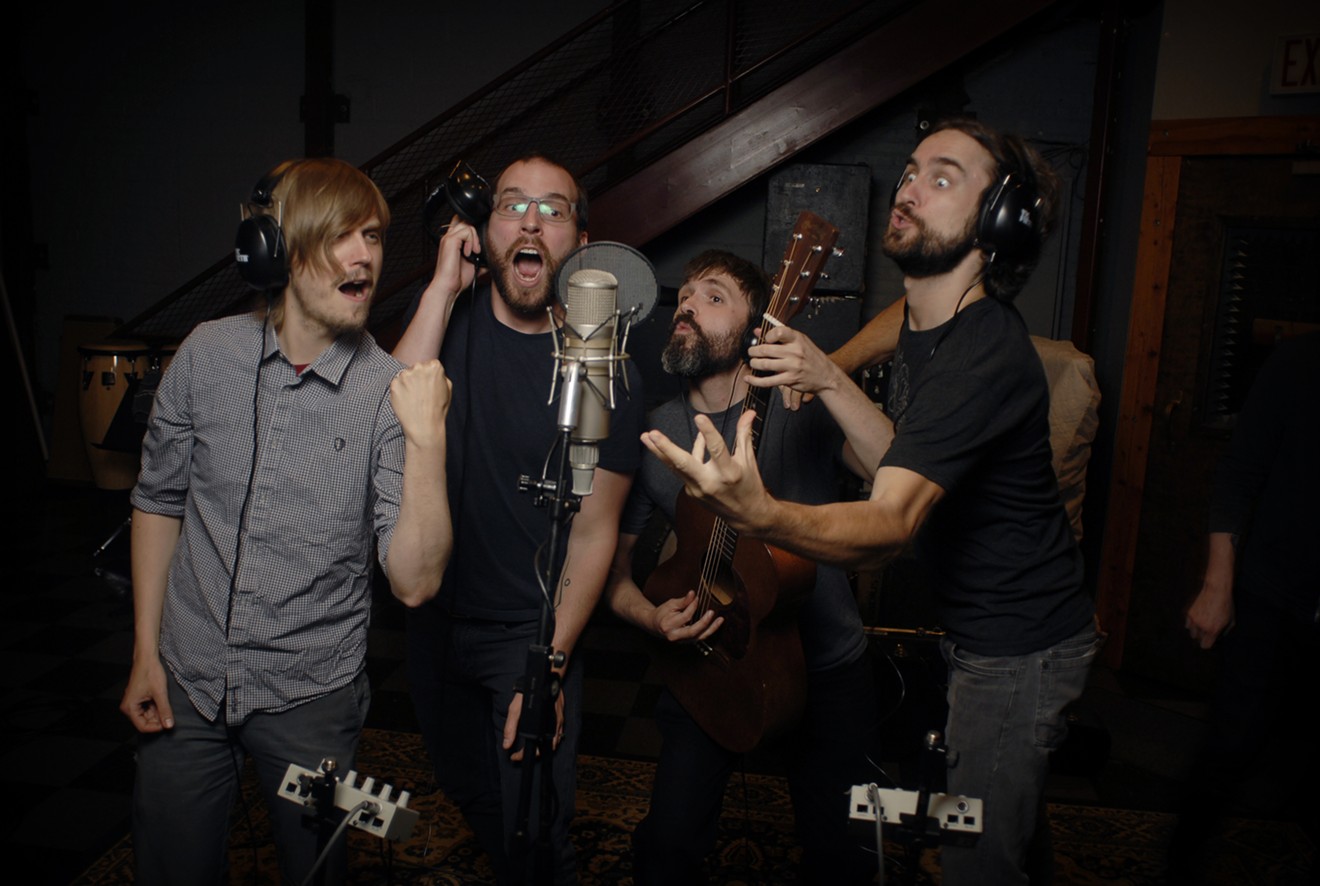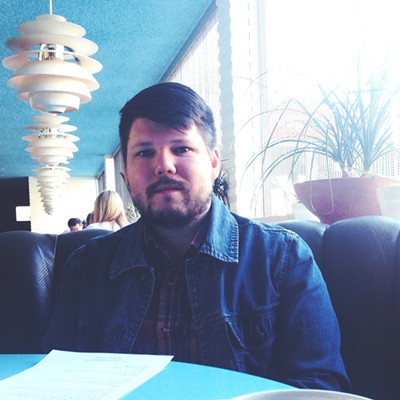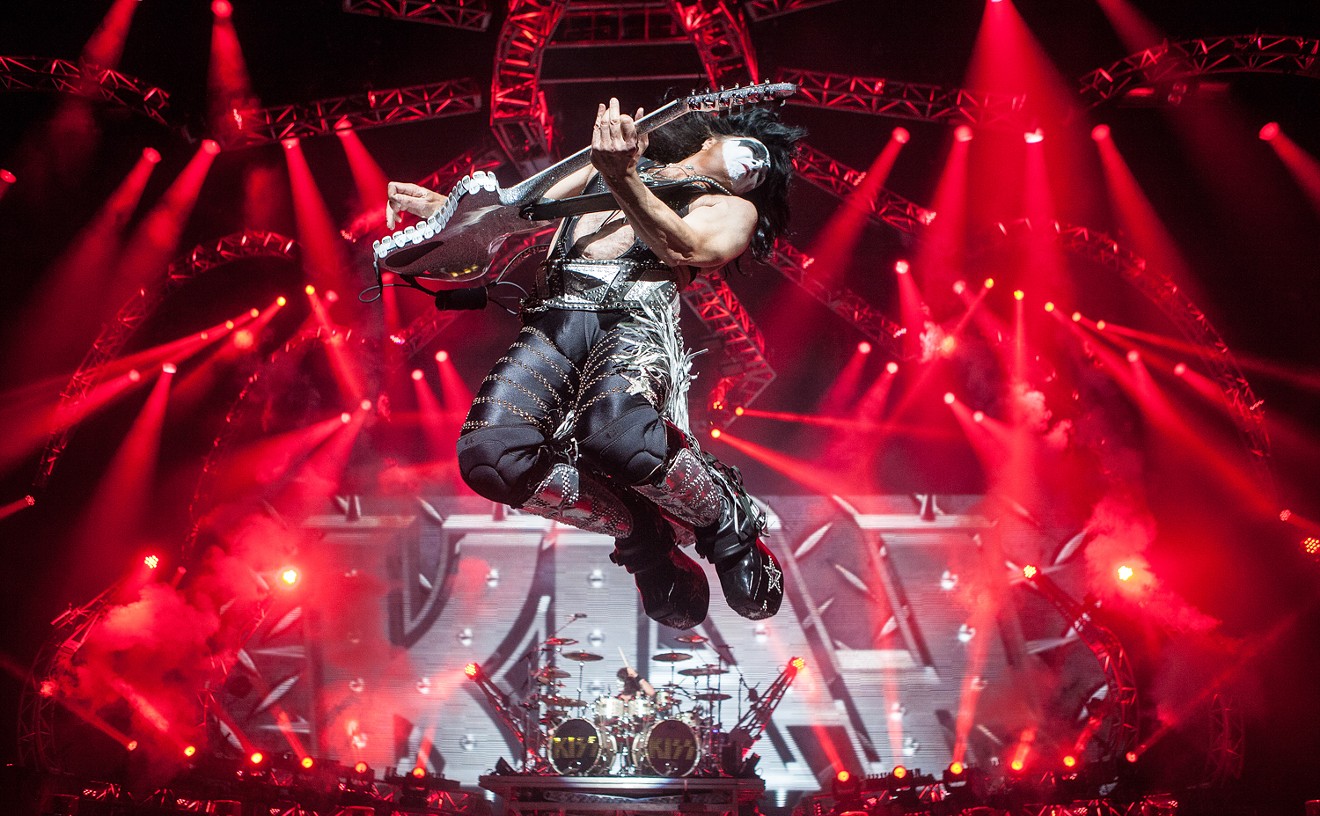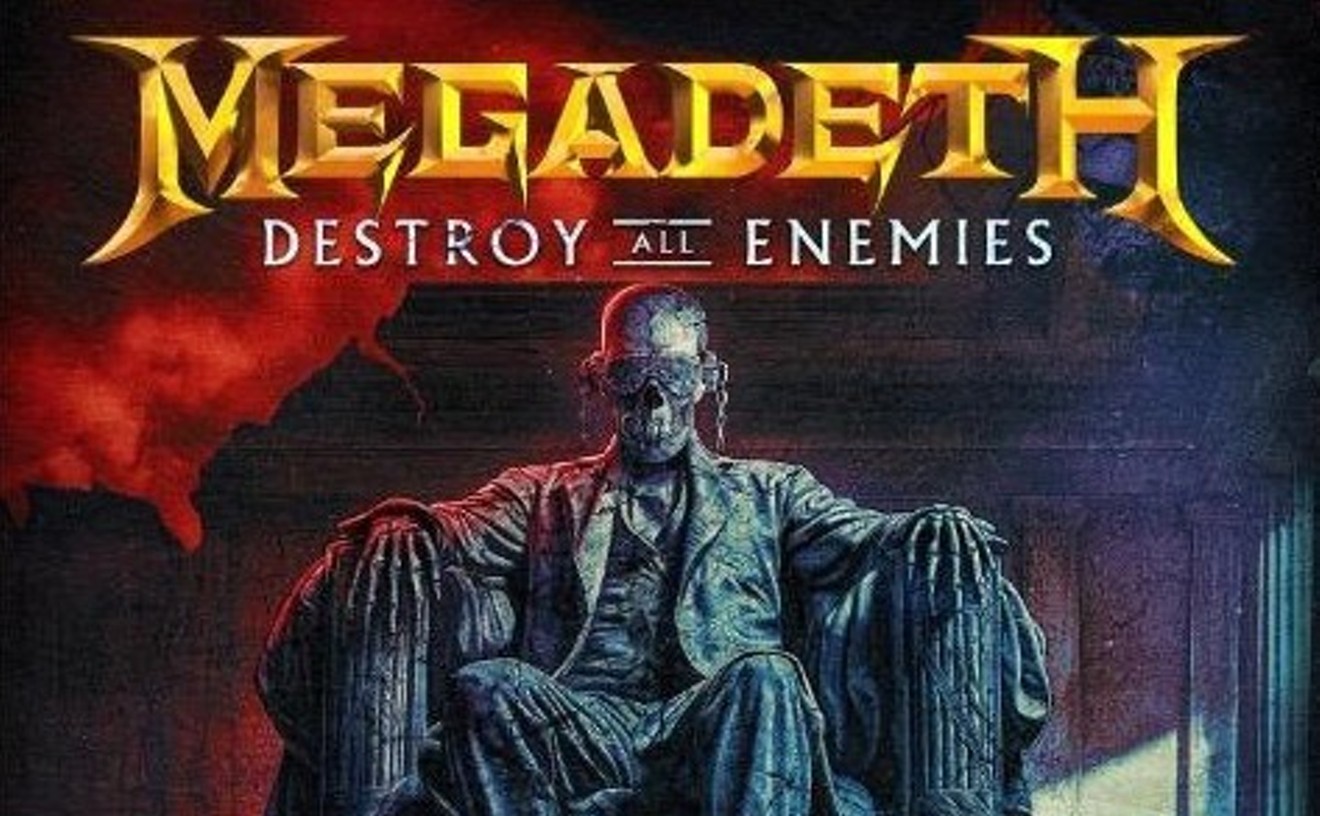Earlier this year at Arcosanti, the experimental community founded in the 1970s by “arcologist” Paolo Soleri, I found myself standing with friends at the FORM festival, deep in conversation as the sun set over the high desert north of Phoenix.
Curated by electronic art rock band Hundred Waters and R&B singer Moses Sumney, the festival offered a vivid musical experience in 2017, with performances by Syrian wedding singer Omar Souleyman, avant-garde folk artist Mt. Eerie, theatrical indie rocker Father John Misty, and futuristic soul singer Solange.
We’d just finished watching cosmic synthesist Kaitlyn Aurelia Smith perform a set of blissful electronic compositions, so naturally, Trevor de Brauw, of the festival’s PR firm Biz 3 and guitarist of post-rock band Pelican, and I are talking about nü-metal. Specifically, we’re talking about riffs, and how the maligned genre, often and correctly dismissed by discerning listeners, put a premium on the idea of “the riff.” Subtract the rapping, remove the occasional DJ scratching, ditch the bombastic, thudding rhythms, and you’re left with strikingly minimal, down-tuned riffs. Removed from the bravado and macho snarl of nü-metal, these riffs often approach brilliance in their elemental simplicity.
It’s easy to define “riff.” Google it and you’ll turn up “a short repeated phrase in popular music and jazz, typically used as an introduction or refrain in a song.” Riffs are synonymous with rock ’n’ roll music. Descended from the blues, built on a fusion of work songs, gospel, rockabilly, R&B, country, and ballads, rock ’n’ roll was defined by a backbeat and propulsive riffs. Archetypes abound: Chuck Berry’s fiery picking, Hendrix’s feverish smears of distorted noise, The Stones’ “Satisfaction” — simple, buzzing, and insistent.
But part of what makes the term “riff” so useful is its adaptability. Some 70 or so years after the birth of rock ’n’ roll, the idea of the riff is ever more diffuse. Rap beats are often built on “short repeated phrases” — same for electronic dance music. Katy Perry songs are built on “riffs” of a kind; modern country abounds with loud, crunchy guitar figures. Within the context of rock music, it gets even harder to discern what’s what. There are myriad ways in which the riff has been decoupled from its original structural form — heavy metal elevated the riff from popular context; the post-rock of Pelican and de Brauw’s solo work, boils down the deconstruction even deeper.
So what makes a good riff? What takes a riff from good to great?
“There’s not really an easy way to answer that question. Anything I would say, I would think of an example that contradicts it,” de Brauw says over the phone from Los Angeles, where Pelican is rehearsing for an upcoming tour and working on new material. Since forming in Illinois in 2001, the band’s exemplified a particular brand of instrumental hard rock, brainy and condensed, but rooted in driving, colossal guitar figures.
“If you think about the history of riffs, the idea is you’re laying down the bedrock of the song, the groove that you will place the melody over,” de Brauw says. “Insofar as the way Pelican operates, we do almost the opposite. We’re trying to imbue the riff with the melody, because we don’t have a singer.”
Like peers Neurosis, Isis, and Mogwai, Pelican blends doom metal, drone, and post-rock into a dense single compound, offering an avant-garde approach to riff-based guitar music. It’s heavy, but also melodic, crushing but capable of gravity-defying float, too. Locked together, drummer Larry Herweg, bassist Bryan Herweg, and guitarists Dallas Thomas and de Brauw sum up one big riff — an entire musical idea.
“There’s a reason that bands like Sabbath and Iron Maiden have exerted such an influence over heavy metal and tangential [genres], post-metal, whatever you want to call it that we do,” de Brauw says. “You hear that music and you can sense a way in which you don’t need these other elements of the song, because the riff itself can become the song.”
Though the band has occasionally worked with vocalists, Pelican’s music is most often instrumental, leaving room for sludgy, thick riffs to serve as the primary melodic focus. De Brauw cites disparate influences analyzing what makes a riff work — from the straightforward charge of The Ramones and Screeching Weasel, the knotty “slow-core” of Pedro the Lion and Bedhead, Blake Schwarzenbach of Jawbreaker and Jets to Brazil, Fugazi, and British classic rock band Free’s “All Right Now.” There’s no one way for a riff to work, but what it comes down to for de Brauw is imagination. A great riff provides a certain kind of space within a song for the listener to claim as their own, a space for expectations to be rewarded but also subverted.
“When I think about the riffs that …capture my imagination the most, usually the thing that attracts me to them is there’s some quality [that] plays to your expectations,” de Brauw says. “There’s aspects to the riff that [let you] anticipate what’s going to happen next — like a chord change or a run of notes that you have some intuitive sense [is] coming — but there’s usually a left turn in there somewhere, a note that feels out of place or takes away your comfort, and then brings it back with a resolution of some sort.”
On his solo debut, 2017’s Uptown, de Brauw indulges less-heavy atmospheres, hewing closer to ambient sounds and quieter drones. But even then, in a more subdued mood, riffs crop up in unexpected ways. My favorite, “Turn Up for What,” begins as a Brian Eno-like soundscape, a blur of electronic piano. But just as you’re lulled in, de Brauw’s guitar comes in, distorted, droning, and sure enough, riffing. In this space, the riff becomes a mediation, a processional. By traditional standards, it’s something other than a riff — not a repeated, melodic phrase — but it’s unmistakable in its construction, at once a confirmation and undeniably a subversion.
“Because the idea of the riff is so malleable, it can really be anything,” de Brauw says. “It can be a loop of a wave crashing on a beach, or a birdsong slowed down 400 percent and then sampled. … As artists, we’re so interested in breaking against models and tropes, but that we also still crave that structure.
“That’s what’s cool about riffs — it’s something to utilize, but also [a tool to] rail against the rules at that same time.”
Pelican is scheduled to perform Friday, August 25, at Crescent Ballroom. Tickets are $15 to $18 via crescentphx.com.
[
{
"name": "Air - MediumRectangle - Inline Content - Mobile Display Size",
"component": "18478561",
"insertPoint": "2",
"requiredCountToDisplay": "2"
},{
"name": "Editor Picks",
"component": "16759093",
"insertPoint": "4",
"requiredCountToDisplay": "1"
},{
"name": "Inline Links",
"component": "17980324",
"insertPoint": "8th",
"startingPoint": 8,
"requiredCountToDisplay": "7",
"maxInsertions": 25
},{
"name": "Air - MediumRectangle - Combo - Inline Content",
"component": "16759092",
"insertPoint": "8th",
"startingPoint": 8,
"requiredCountToDisplay": "7",
"maxInsertions": 25
},{
"name": "Inline Links",
"component": "17980324",
"insertPoint": "8th",
"startingPoint": 12,
"requiredCountToDisplay": "11",
"maxInsertions": 24
},{
"name": "Air - Leaderboard Tower - Combo - Inline Content",
"component": "16759094",
"insertPoint": "8th",
"startingPoint": 12,
"requiredCountToDisplay": "11",
"maxInsertions": 24
}
]











